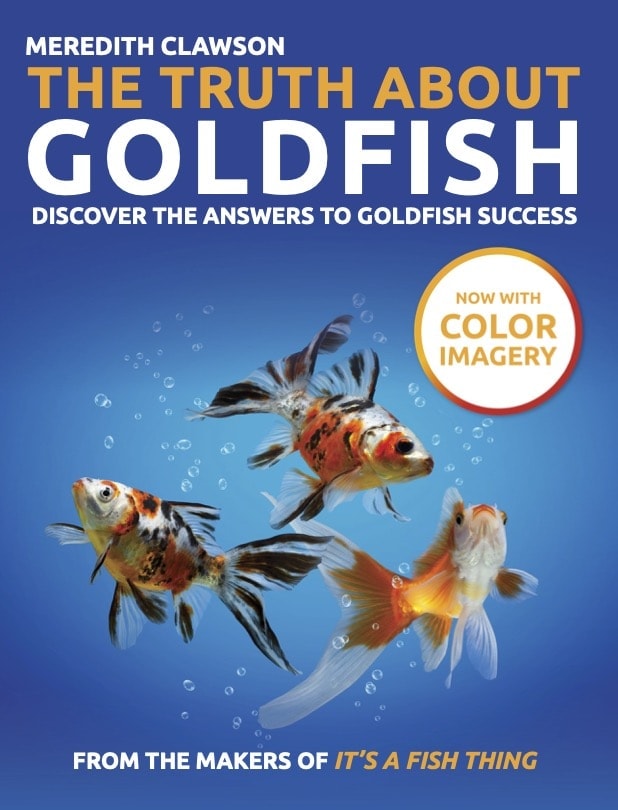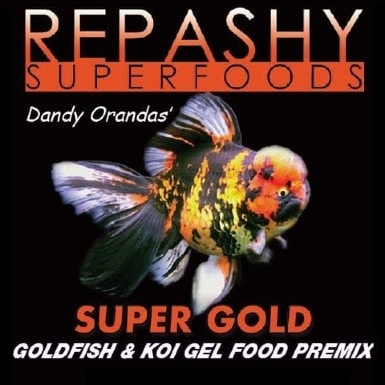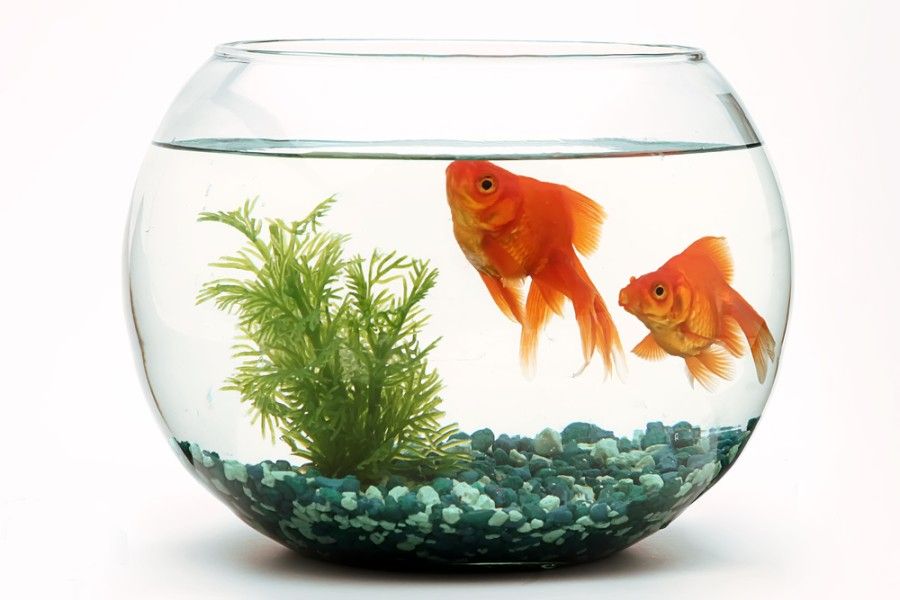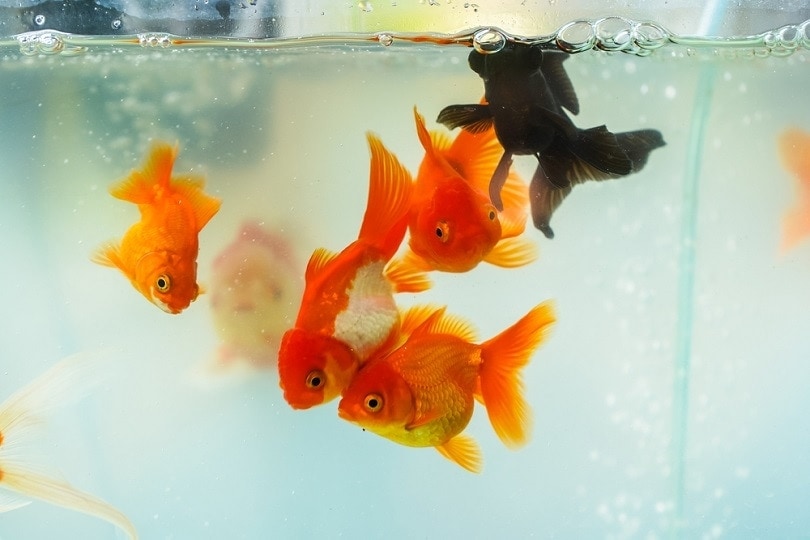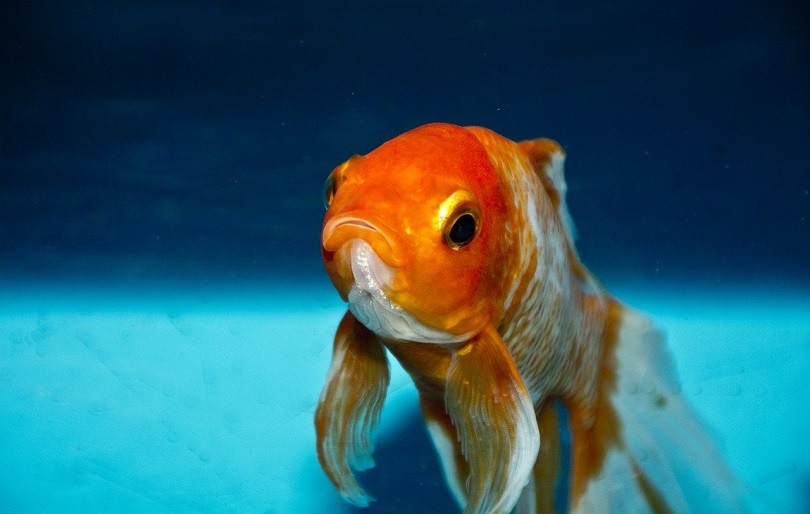Benefits of Using Gel Food for Goldfish & What to Avoid

Updated on

There’s one staple food I couldn’t live without: GEL food. Out of the box, it really isn’t hard to mix up. And it is far superior to flakes or maybe even pellets.
How come?

Why I Recommend Using Gel Food for Goldfish
The number one reason: It’s Moist! How moist your fish’s food is REALLY important. Especially if you keep fancy goldfish.
Think about this: In the wild, all of the food a goldfish eats is moist. And their digestive tract is used to processing everything that is under water.
Healthy digestive system = healthy goldfish. You can soak pellets before feeding them, but this can cause them to disintegrate and lead to cloudy water.
And flakes? No. Just, no.
Gel food uses gelatin to bind the ingredients in a moist substance.
The best part? Good brands of food don’t make a big mess in the tank and they are highly digestible.
How to Make Gel Food Using Pre-bought Powder
Directions may vary a bit depending on what brand you buy, but the following method is successful for me:
- Measure out 3 parts water to 1 part powder. Be sure to use filtered water, as the boiling process won’t remove chloromines. Put the water in one pot and the powder in a little bowl.
- Bring the water to a boil on the stove.
- Whisk in the powder until no more clumps are seen.
- Pour the mixture into your mold of preference. You can use anything from a glass container to a cookie sheet, depending on how much you decide to make up.
- Refrigerate until the mold has firmed up, then remove and cut into pieces. Keep refrigerated.
It should last in the refrigerator for around 2 weeks. You can freeze it for several months and it will stay good.
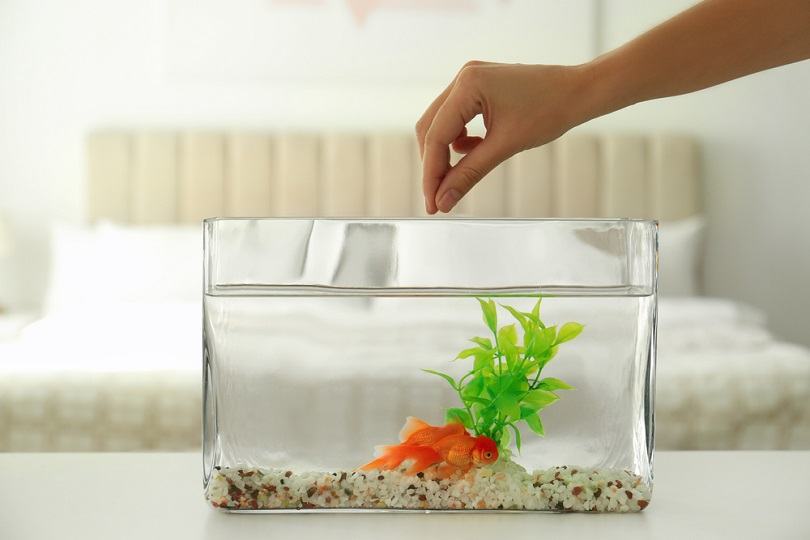
The 4 Ingredients to Avoid in Your Fish’s Gel Food (Or Other Goldfish Food)
Like people, goldfish have become victims of big companies trying to maximize their profits – regardless of whether or not they harm the health of the consumer.
They might be able to produce some useful products like water conditioners, but big-name labels have a tendency to market fish food that is actually “junk food.”
Get this: Fancy goldfish are delicate and especially prone to swim bladder issues and constipation. Ever had a fish before that has had floating problem? Diet can be a MAJOR contributor to that. Low-quality ingredients can actually be damaging to your fish’s internal health.
Another sign of a poor diet includes waste that floats at the surface of the tank, perhaps with bubbles trapped inside. This means the fish is having too much gas trying to digest their food.
So, let’s take a look at some common ingredients that you need to watch out for when choosing your food:
1. Grains
It is really hard to find one that does not contain wheat or wheat products in it (gluten free). Remember, grains are not a natural part of a balanced goldfish diet.
And it gets worse: Barley, rice and corn can also lead to trouble. I really don’t advise feeding anything that includes wheat flour (not even whole wheat), wheat gluten, wheat germ or wheat bran. These things just don’t belong in fish food.

2. Fish Meal
Inexpensive “fillers” are all too common in today’s commercial foods. Just consider one example, fish meal.
Fish meal… what is it? Basically, it’s the unwanted leftovers from processed fish – bones, scales, fins, intestines (ew)… stuff that’s hard to find a use for. Instead, opt for food that clearly says “whole fish meal” or state what fish it came from, like “whole salmon meal.”
This is a much better product that offers more to the fish.
Many fish die as a result of improper food and/or portion sizes, which can be easily prevented by proper education. That's why our best-selling book, The Truth About Goldfish, covers exactly what you can and can’t give your goldies when it comes to mealtime. It’s even got a section dedicated to keeping your pet fish alive and well-fed when you go on vacation!
3. Land Animal Products
Land animal protein also isn’t digestible by fish. I mean, have you ever seen a carp chase down a cow?
Goldfish aren’t made to digest chicken, beef or eggs.
Protein is important, but it should come from water-dwelling creatures. Marine protein.
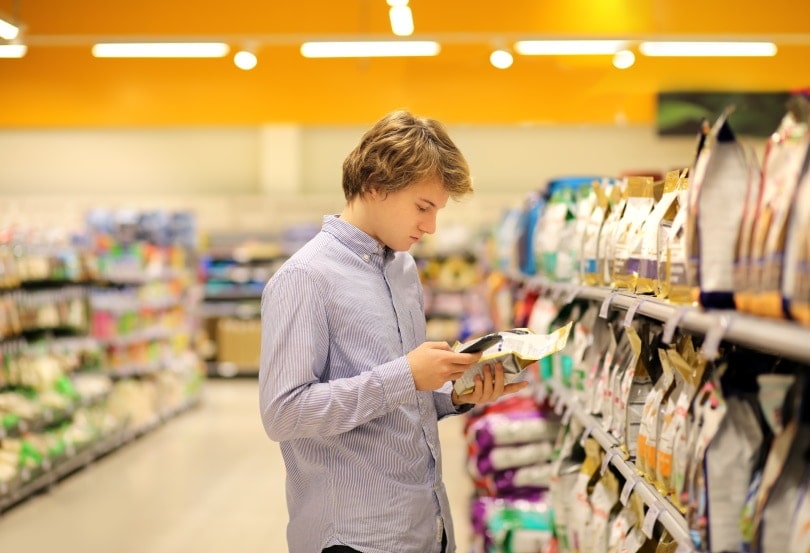
4. Soy Products
Besides potentially feeding your goldfish GMO’s, soy is not readily digested by goldfish and should be avoided.
It is very much like corn in respect to digestion… not the easiest.
What is the Best Brand to Use? (Hint: Repashy Super Gold!)
Look: I’ve tried MANY kinds of goldfish food for my fish, including gel food.
Most is not formulated for use by goldfish, but mostly herbivorous tropicals. Some plant ingredients are good and even necessary, but there should also be an ample portion of high-protein items such as krill, squid or shrimp.
I’ve found some, like New Life Spectrum (which has wheat flour!) just don’t bind well, clump during mixing or make a big “particle puff” once you put it in the water. Still others don’t seem to taste that great to the goldfish. Not good!
That’s why my go-to brand is Repashy Super Gold Gel Food, which even my delicate swim-bladder-impaired goldfish has done quite well on. It’s a new food on the market co-formulated by Ken Fisher of Dandy Orandas. Ken uses this food at his facility to keep his more delicate fancy goldfish in good digestive health.
It’s also ideal for slim-bodied fish such as the common and comet goldfish – they all have the same nutrition needs. Sure, it isn’t the cheapest thing you can buy, but they use high quality ingredients that are the most nutritious and easy on the constitution.
And how much is the health of your pet worth, anyway?
DIY Gel Food
You can make your own gel food at home, if you have the ingredients and goldfish nutritional knowledge to do so. There are many recipes to be found online, but not all of them meet the needs of a goldfish specifically.
Unless you need to feed a whole pond of goldfish, you probably won’t save money doing it this way. You will also need to have a pretty deep understanding of fish nutrition in order to make sure your fish have a complete diet.
Quick tip: Just make sure not to add some of the common fish food no-no’s, such as beef, pork or chicken.
And remember—any food is only as good as its ingredients. You can get creative, but TOO creative and the fish might reject it!

Pulling It All Together
Gel food is clearly (in my humble opinion) the hands-down winner when it comes to the best option for feeding your goldfish.
But as with any food, even though it is a good thing, too much of it can lead to water quality problems. Overfeeding is a leading cause of issues in the tank’s balance and environment.
So: What is your experience?
Are you considering making the switch from pellets or other dry foods?
Have you ever tried making your own, and what was it like?
See also:
- Beware of These 5 Toxic Ingredients Lurking in Your Fish Food
- Why Is My Goldfish Not Eating? 8 Vet-Reviewed Reasons
Featured Image Credit: Japans Fireworks, Shutterstock


